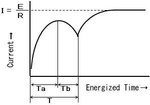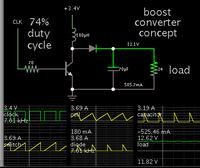cybero
Newbie level 3
Hello everyone,
I'm working with a microcontroller which its supply voltage range is 1.8V to 3.6V
I want to connect a solenoid to this mcu (this solenoid will be activated occasionally).
Current–voltage characteristic of the solenoid:
So, my idea is to connect a 3.6V or 3.3V battery to the mcu and use a DC DC Boost Converter to supply the solenoid.
But the problem is that I cannot find any 3.6V to 12V DC DC converter which can also gives 0.5A.
Any help would be really appreciated.
I'm working with a microcontroller which its supply voltage range is 1.8V to 3.6V
I want to connect a solenoid to this mcu (this solenoid will be activated occasionally).
Current–voltage characteristic of the solenoid:
Input voltage: DC12V
Direct current: around 400mA
Direct current: around 400mA
So, my idea is to connect a 3.6V or 3.3V battery to the mcu and use a DC DC Boost Converter to supply the solenoid.
But the problem is that I cannot find any 3.6V to 12V DC DC converter which can also gives 0.5A.
Any help would be really appreciated.

